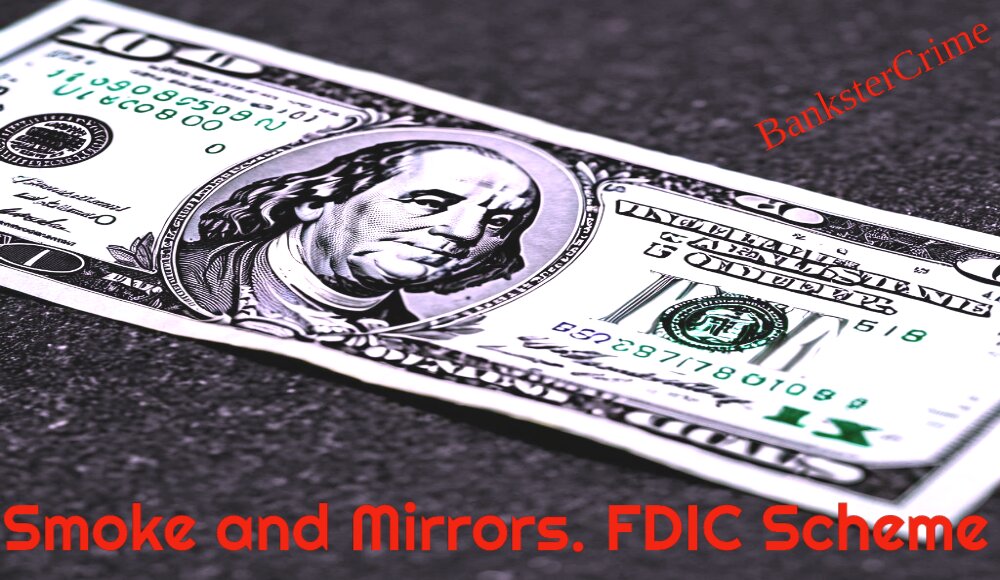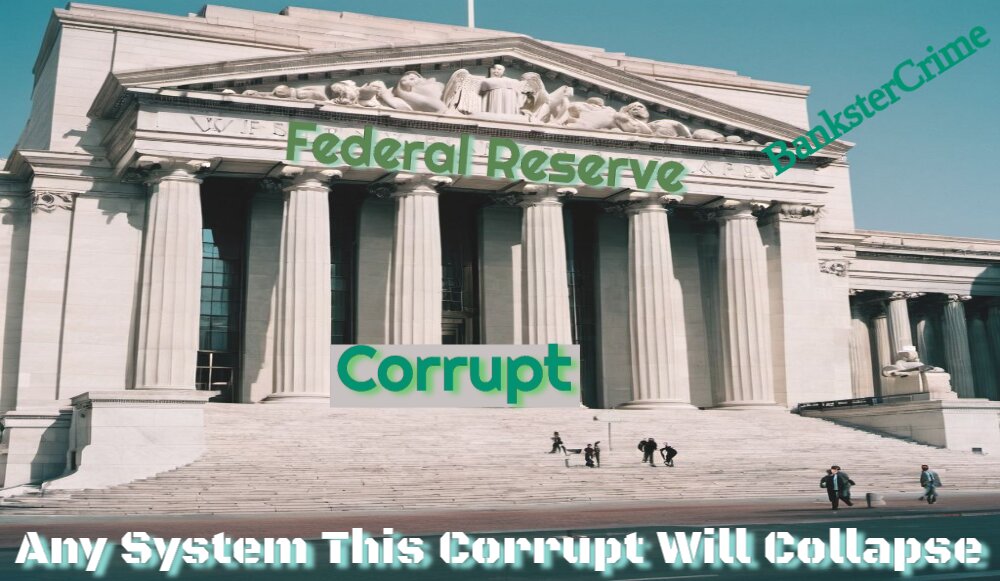Smoke and Mirrors. FDIC Scheme–Smoke and Mirrors. FDIC Scheme–a Key Driver of the Failures of Silicon Valley Bank and Signature Bank Were Their Over Reliance on Uninsured Deposits

BanksterCrime:
By Pam Martens and Russ Martens:
Today, the U.S. Senate Banking Committee will call federal banking regulators before it to testify at a hearing at 10 a.m. The underlying theme will be why these regulators were caught napping when the second, third, and fourth largest bank failures in U.S. history occurred in a span of seven weeks this past Spring and hear about the new plans of action to restore confidence in the U.S. banking system.
One of the regulators testifying will be the soft-spoken Martin Gruenberg, Chairman of the Federal Deposit Insurance Corporation (FDIC), the federal agency that insures the deposits at federally-insured U.S. banks up to $250,000 per depositor, per bank, as long as the branch is located on U.S. soil. (Deposits at foreign branches of U.S. banks are not insured by the FDIC.)
In his written remarks for today’s hearing (which were released early), Gruenberg revealed that the biggest losses to the Deposit Insurance Fund (DIF) when Silicon Valley Bank (SVB) and Signature Bank failed in March, did not come from bad loans or underwater debt instruments but from the FDIC having to make good on the banks uninsured deposits that were stampeding out the door. (The FDIC temporarily took the banks into receivership when they failed until they could be sold.) Gruenberg explains as follows:
“As of June 30, 2023, the FDIC estimated the cost for the failures of SVB and Signature Bank to total $18.5 billion. Of that estimated total cost of $18.5 billion, the FDIC estimated that approximately $15.8 billion was attributable to the cost of covering uninsured deposits as a result of the systemic risk determination made on March 12, 2023, following the closures of SVB and Signature Bank.”
To put those figures in sharper focus, 85 percent of the cost to the FDIC came from uninsured deposits.
When Silicon Valley Bank and Signature Bank failed in March, the U.S. Treasury Secretary, the FDIC and the Federal Reserve announced that the FDIC would guarantee uninsured deposits at those banks under the statutory systemic risk exception. Ostensibly, that was to allow things to calm things down and prevent bank runs from occurring at other banks holding large amounts of uninsured deposits.
When a federally-insured bank fails, it cannot enter the bankruptcy process like other businesses to resolve creditors’ claims. Instead, it is taken into receivership by the FDIC, which takes control of the bank and either winds it down or sells it to another bank. Costs to the FDIC associated with a bank resolution are funded by the FDIC’s Deposit Insurance Fund, which is funded through assessments on banks but ultimately guaranteed by the U.S. Treasury.
A key driver of the failures of Silicon Valley Bank and Signature Bank were their over reliance on uninsured deposits — meaning those in excess of $250,000 per account, per bank, or residing on foreign soil. In an earlier March report from the FDIC on the failures of Silicon Valley Bank and Signature Bank, it reported that “At year-end 2022, SVB reported uninsured deposits at 88 percent of total deposits versus 90 percent for Signature Bank.”
Clearly, bank examiners did not scream loud enough at those insane levels of uninsured deposits.
Uninsured deposits can and do accelerate bank runs as the FDIC found out the hard way this past Spring. But the three banks that failed in the Spring held miniscule amounts of deposits compared to the Wall Street mega bank, JPMorgan Chase.
At the time of their failure, Silicon Valley Bank held approximately $175.4 billion in deposits; Signature Bank held $88.6 billion in deposits; and First Republic Bank held $103.9 billion in deposits.
Compare those amounts to what is lurking at the largest bank in the United States – JPMorgan Chase. According to JPMorgan Chase’s most recent call report with its banking regulators for the quarter ending June 30, it had $1.04 trillion in uninsured deposits in its domestic branches and another $437.6 billion in deposits in foreign offices that lack FDIC insurance, bringing its total uninsured deposits to $1.48 trillion.
JPMorgan Chase is a Frankenbank that is allowed by banking regulators to house under one roof and under the unwatchful eye of its Chairman and CEO Jamie Dimon, a trading casino that had pled guilty to multiple felony counts and tens of trillions of dollars in derivatives that remain largely a black hole to regulators. (See JPMorgan’s Board Made Jamie Dimon a Billionaire as the Bank Rigged Markets, Laundered Money, and Admitted to Five Felony Counts.)
One would think that a responsible Congress and/or responsible banking regulators would have broken up JPMorgan Chase in 2013 when the U.S. Senate’s Permanent Subcommittee on Investigations released its 300-page report on how the bank had gambled with depositors’ money and lost $6.2 billion trading exotic derivatives in London.
Or perhaps in 2014 when the bank admitted to money laundering for Ponzi mastermind Bernie Madoff for years without filing its legally mandated Suspicious Activity Reports with law enforcement.
Or maybe in 2015 when it and other banks were charged with running a cartel to rig foreign exchange markets.
Or how about in 2016 when the serial lawbreaking bank was handed a non-prosecution agreement by the U.S. Department of Justice in a Foreign Corrupt Practices Act (FCPA) case where the bank effectively bribed Chinese government officials by giving jobs to their relatives in order to win banking deals.
Or possibly in 2020 when the bank admitted to two felony counts brought by the U.S. Department of Justice for “tens of thousands of instances of unlawful trading in gold, silver, platinum, and palladium…as well as thousands of instances of unlawful trading in U.S. Treasury futures contracts and in U.S. Treasury notes and bonds….”
Not only did Congress and banking regulators not break up JPMorgan Chase despite this unprecedented crime spree but they allowed the same Chairman and CEO, Jamie Dimon, to keep his post and receive lavish compensation awards from his deeply compromised Board of Directors.
Which brings us full circle to today. The FDIC has acknowledged that it knows that uninsured deposits raise the stakes for bank runs and potentially devastating hits to its Deposit Insurance Fund, which had only a $117 billion balance as of June 30 according to Gruenberg’s written testimony.
But no one in Congress or at the federal banking regulators has the courage to recommend breaking up JPMorgan Chase – even after an international bank study, using 150 years of data, shows mega banks produce financial instability and more severe banking crises.
If you care about the economic future of the United States and the financial stability of the U.S. banking system, call your Senators today and demand immediate and meaningful hearings on breaking up the Wall Street mega banks and restoring the Glass-Steagall Act, which would permanently separate the trading casinos on Wall Street from the nation’s federally-insured banks.
The future of the United States depends on the willingness of its citizens to engage in this battle.

Beef in Bulk: Half, Quarter, or Eighth Cow Shipped to Your Door Anywhere within Texas Only
We do not mRNA vaccinate our cattle, nor will we ever!
Grass Fed, Grass Finished Beef!
Here is a discount code for HNewsWire readers to get 20 percent off first order:
HNEWS20
From Our Ranch to Your Table
Revelation: A Blueprint for the Great Tribulation


A Watchman Is Awakened


Will Putin Fulfill Biblical Prophecy and Attack Israel?



Newsletter
Orphans

Editor's Bio











